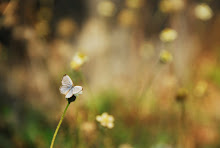Most bird species, as I learned from Ackerman's The Genius of Birds, are altricial and their brains - like ours - grow a great deal after birth. In other words, nest sitters end up with bigger brains than nest quitters. Tempting as it may be to compare birds with human, Ackerman reminded us not to be accused of anthropomorphizing, interpreting the behavior of a bird as if it were a human clothed in feathers.
Still, I love the idea that birds and humans have a lot in common - emotional, analytic, creative, spatial, to name a few. Let me offer an example from the book. Genome sequencing of forty-eight species of birds has identified a set of more than fifty genes that flick on and off in the brains of both humans and songbirds in regions dealing with imitating sounds, speaking, and singing.
As I read the book, I kept drawing parallels between birds and my daughter. Yeah, the fact that birds play a lot seems to be good news. And more so for the suggestion by zoologist that it's only clever birds that are capable of complex play activities. My daughter would be delighted to hear that play both requires intelligence and nurtures it.
To back up the ornithologists' finding that sleep plays a role in song learning for young birds, I have to say that this is true for Jasmine, too. Once upon a time - just last week really - my daughter was practicing the song of Disney animated movie Moana "How Far I'll Go." An attractive song, in lyrics or in melody. Ask 10 serious followers of Angela Duckworth what best characterizes grit, you'll probably get 10 different answers. Ask 10 animated movie fans how Moana ignites children's grit, and you might get just one: their persistent efforts to pick up the songs and remember the lines. Clearly, my girl practices the song for more times than I can count.
Oh oh oh, oh, oh oh oh oh.

No comments:
Post a Comment